Blacula – The Black Avenger
William Marshall was born in Gary, Indiana in 1924 to Thelma and Vereen Marshall. After graduation from Governors State University, he attended new York University as an art student. He then trained for a theatre career at the Actors Studio at the American Theatre Wing, and with Sanford Meisner at the Neighborhood Playhouse.
He made his Broadway debut in 1944 in Carmen Jones. Among his many other Broadway appearances, he was an understudy for Boris Karloff as Captain Hook in Peter Pan in 1950, then played the leading role of De Lawd in the 1951 revival of The Green Pastures (a role he reprised in a BBC telecast of the play in 1958). He performed in Shakespeare plays many times on the stage in the U.S. and Europe, including the title role in at least six productions of Othello.
Marshall even played Othello in a jazz musical version, Catch My Soul, with Jerry Lee Lewis as Lajo, in Los Angeles in 1968. He also portrayed Paul Roberson and Frederick Douglass, both of whom Marshall resembled either in appearance or in physical presence and ability. Marshall researched Douglass’s life for years and portrayed him on television in Frederick Douglass: Slave and Statesman, which he co-produced in 1983.
Marshall’s career on screen began in 1952 in Lydia Bailey as a Haitian leader. He followed that with a prominent role as Glycon, comrade and fellow gladiator to Victor Mature in Demetrius and the Gladiators,1954. His demeanor, voice and stature gave him a wide range, though he was ill-suited for the subservient roles that many Black actors of his generation were most frequently offered.
In the early 1950’s, Marshall starred briefly in a series about Black police officers, entitled Harlem Detective. This series was based on the novels by Chester Himes, which later became Cotton Comes to Harlem and Come Back Charleston Blue, two of the best known Blaxploitation crime and action films. The show was canceled when Marshall was named as a communist in the anti-communist newsletter Counterattack. Marshall managed to continue appearing in both television and films.
Marshall was the traveling opera singer Thomas Bowers on Bonanza. He won two local Emmys for producing and performing in a PBS production, As Adam Early in the Morning, a poetical theatre piece originally performed on stage. He also was featured in the popular series, “The Hitchcock Hour” in an episode titled, “The Jar”, with actors Pat Buttran and George Lindsey. In addition to these roles, Marshall also appeared on various television series including The Alfred Hitchcock Hour, Rawhide, The Man From UNCLE and The Jeffersons.
He was Attorney General Edward Brooke in The Boston Strangler and a leader of the Mau-Mau uprising in Something of Value.
He received the most widespread fame for his role in the vampire film Blacula and its sequel Scream Blacula Scream.
In later years, Marshall played the King of Cartoons on Pee Wee’s Playhouse from 1987 to 1991. The character’s catch phase “Let…the cartoooon…begin!” became immensely popular.
The Star Trek Effect
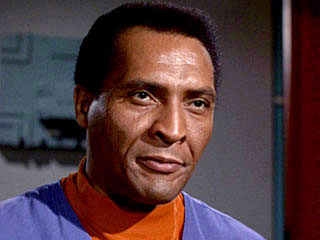 Marshall is perhaps best remembered by television viewers for his role as Dr. Richard Daystrom in the Star Trek Episode: The Ultimate Computer. Born in 2219, Daystrom was a brilliant 23rd-century computer scientist, and inventor of the comptronic and duotronic systems. Daystrom won the prestigious Nobel Prize and the Zee-Magnees Prize in 2243, at the age of 24, for his breakthrough in duotronics, which became the basis for computer systems aboard Federation starships for over 80 years. Daystrom’s early successes resulted in personal troubles, and he spent many years trying to live up to his reputation as a “boy wonder.” In the 2260’s, Daystrom tried to develop a concept he called “multitronics.” This new system involved imprinting human neural engrams upon computer circuits, causing them to mimic the synapses of the brain. The process would give a computer the ability to think and to reason like a human. Unfortunately, when tested, Daystrom’s multitronic system also mimicked the unstable portions of his personality, resulting in a disaster in which nearly 500 Starfleet personnel were killed. The failure of his creation pushed Daystrom over the edge of insanity, and he was committed to a rehabilitation center for treatment. However, his reputation as an innovator remained intact, as one of the most prominent research centers in the Federation, the Daystrom Institute, was named after him.
Marshall is perhaps best remembered by television viewers for his role as Dr. Richard Daystrom in the Star Trek Episode: The Ultimate Computer. Born in 2219, Daystrom was a brilliant 23rd-century computer scientist, and inventor of the comptronic and duotronic systems. Daystrom won the prestigious Nobel Prize and the Zee-Magnees Prize in 2243, at the age of 24, for his breakthrough in duotronics, which became the basis for computer systems aboard Federation starships for over 80 years. Daystrom’s early successes resulted in personal troubles, and he spent many years trying to live up to his reputation as a “boy wonder.” In the 2260’s, Daystrom tried to develop a concept he called “multitronics.” This new system involved imprinting human neural engrams upon computer circuits, causing them to mimic the synapses of the brain. The process would give a computer the ability to think and to reason like a human. Unfortunately, when tested, Daystrom’s multitronic system also mimicked the unstable portions of his personality, resulting in a disaster in which nearly 500 Starfleet personnel were killed. The failure of his creation pushed Daystrom over the edge of insanity, and he was committed to a rehabilitation center for treatment. However, his reputation as an innovator remained intact, as one of the most prominent research centers in the Federation, the Daystrom Institute, was named after him.
International Fame With Blacula
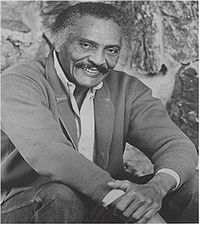 Blacula originates as an African prince, Mamuwalde, and is introduced during an ill-advised attempt, in 1780, to recruit the assistance of Count Dracula against the slave trade. The surprisingly non-altruistic Prince of Darkness refuses Mamuwalde’s request, and ultimately claims insult in the face of Mamuwalde’s defiance. Mamuwalde is infected with vampirism, is contemptuously dubbed “Blacula” by Count Dracula, and is sealed inside a casket. In 1972, Blacula is released from his prison. He preys upon a number of victims in the course of an attempt to claim the reincarnation of his lost wife, Luva. Though Blacula is destroyed at the end of the film, he returns from the grave yet again in the 1973 blood-curdling sequel, Scream Blacula Scream.
Blacula originates as an African prince, Mamuwalde, and is introduced during an ill-advised attempt, in 1780, to recruit the assistance of Count Dracula against the slave trade. The surprisingly non-altruistic Prince of Darkness refuses Mamuwalde’s request, and ultimately claims insult in the face of Mamuwalde’s defiance. Mamuwalde is infected with vampirism, is contemptuously dubbed “Blacula” by Count Dracula, and is sealed inside a casket. In 1972, Blacula is released from his prison. He preys upon a number of victims in the course of an attempt to claim the reincarnation of his lost wife, Luva. Though Blacula is destroyed at the end of the film, he returns from the grave yet again in the 1973 blood-curdling sequel, Scream Blacula Scream.
Sadly, Marshall died June 11, 2003, from complications arising from Alzheimer’s disease and diabetes.
The Blacula Resin and Figures
Blacula Spoof Comics #4
Marvel issued a Spoof Comics in 1972 featuring the Blacula character called Blechhula! Please see the slide show below to read this comic.
Sources: IMBD, The New York Times, Marvel Comics, Ask.com, Wikipedia.
The Blacula movie posters and Spoof Comic Book are a part of the Museum of UnCut Funk Collection.

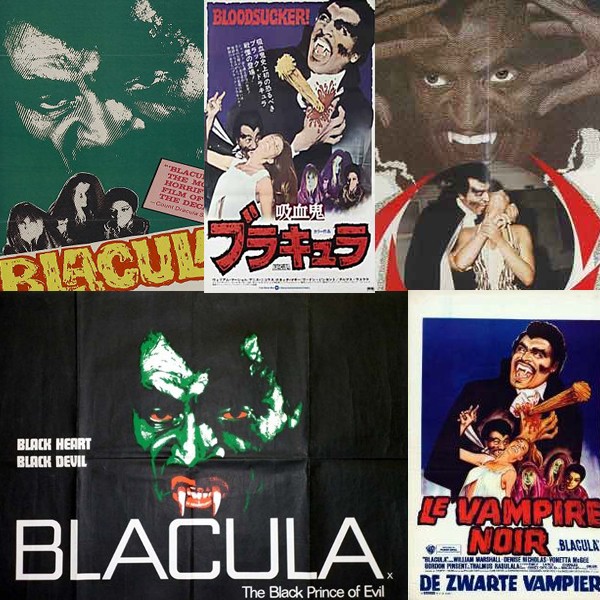

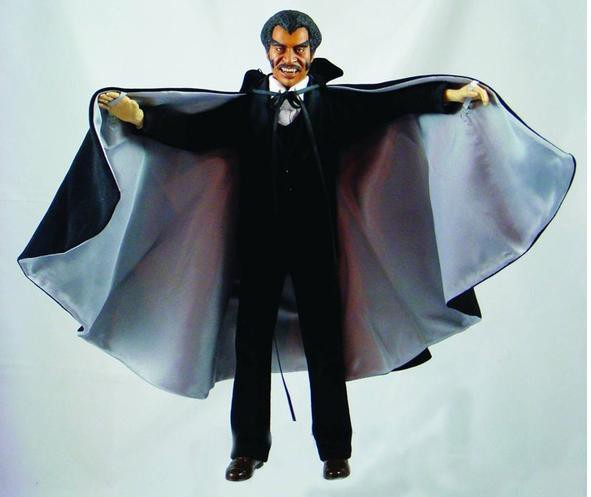
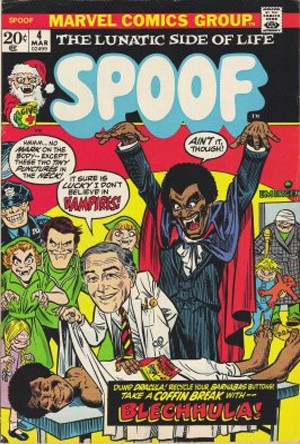
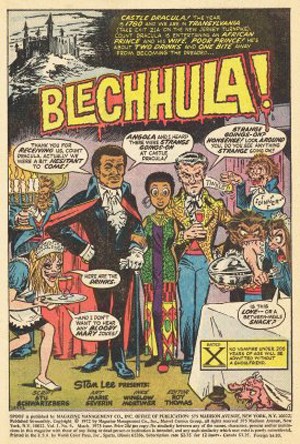
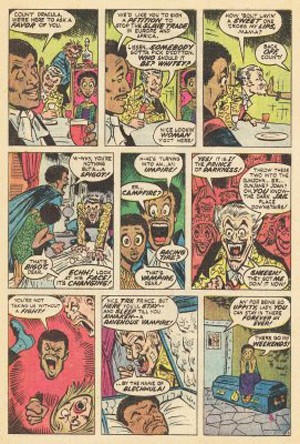
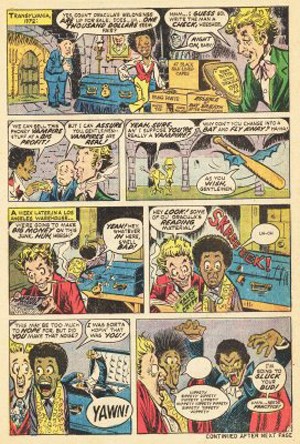

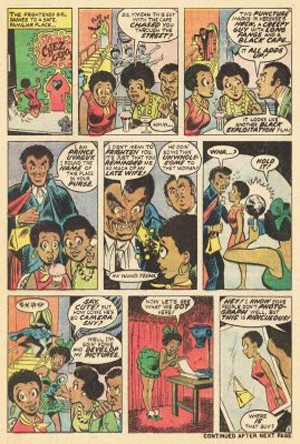
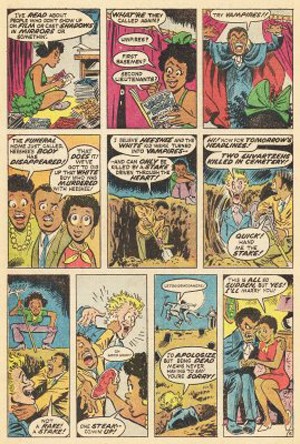

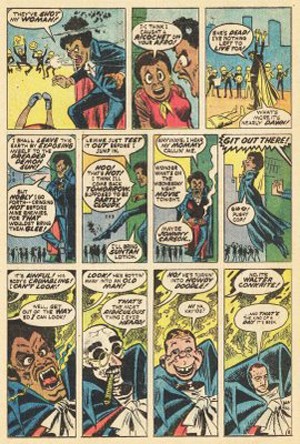
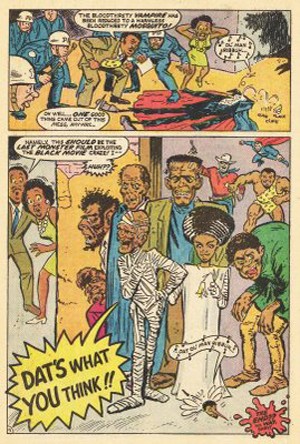
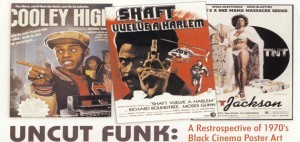

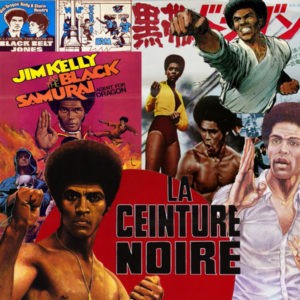

1 Comment
I love William Marshall. Had the pleasure of meeting him a couple of times.